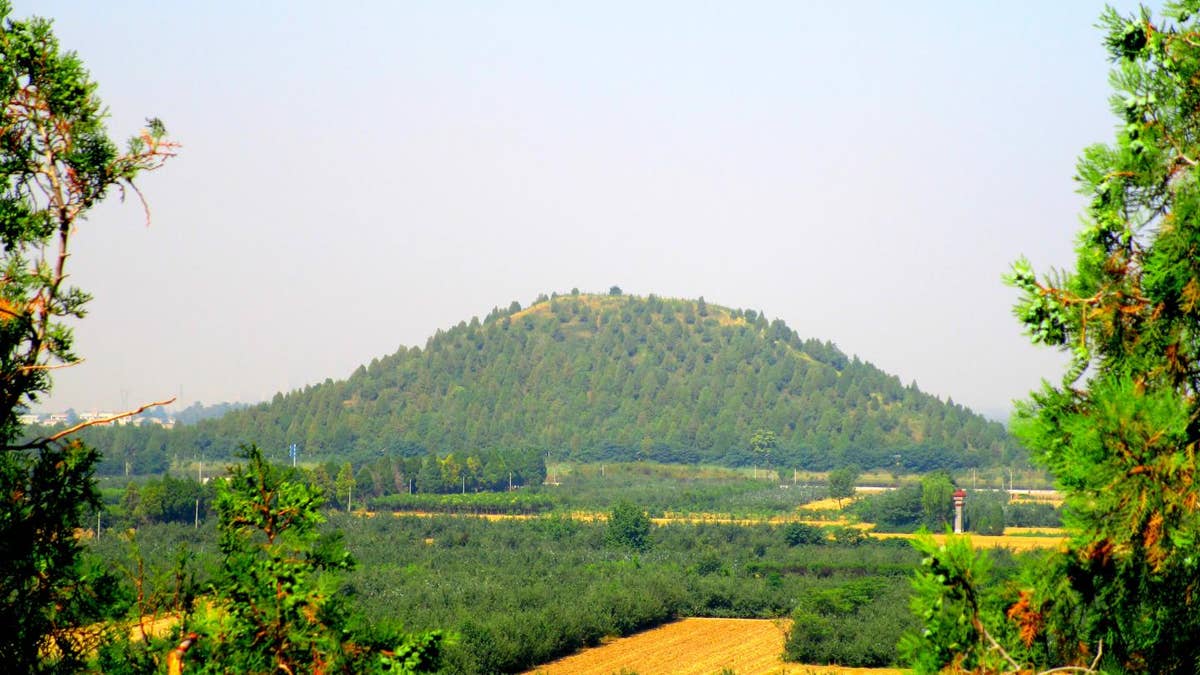
The Maoling Mausoleum of Han Emperor Wu. (Giulio Magli)
A researcher has uncovered fascinating new details about the construction of ancient “pyramids” in China.
There are over 40 “pyramid” mausoleums in China, which are huge artificial earth hills. Only two of these sites have been partly excavated, according to Giulio Magli of the Politecnico di Milano in Italy, author of a new study on the pyramids.
The research, which examines the role of astronomy and Feng Shui in ancient Chinese necropolises, used satellite data and field surveys to collect a wealth of information on the archaeological sites. One of the sites is the pyramid tomb China’s First Emperor Qin Shi Huang, which is guarded by the famous Terracotta Army.
MYSTERIOUS REMAINS OF EXTINCT APE DISCOVERED IN ANCIENT CHINESE TOMB
In a study published in the journal Archaeological Research in Asia Magli notes that the ancient Chinese pyramids fall into two categories. One group of tombs is oriented “with good precision” to the cardinal points of north, south, east and west.

Terracotta Warriors protecting the Qin Mausoleum's east front. (Giulio Magli)
In a statement, the researcher explains that, like their counterparts in Egypt, the ancient Chinese emperors saw their power as “a direct mandate of the heaven, identifying the circumpolar region as a celestial image of the imperial palace and its inhabitants.” As a result, the orientation of pyramids toward the cardinal points should come as no surprise.
However, the second group of pyramids is oriented away from true north. Specifically, these tombs orient to the west of north, when looking toward the monument. “It is out of the question that this second family may have been due to errors of the Chinese astronomers and architects,” Magli explained.
ANCIENT GREEKS MAY HAVE HELPED DESIGN CHINA'S TERRACOTTA ARMY, EXPERTS SAY
Instead, the study proposes that the ancient pyramid builders were accounting for the rotation of the Earth’s axis, which, over long periods of time, alters the position of stars in the night sky.
“The explanation proposed in the article is thus astronomical: the emperors who built the pyramids of the ‘family 2’ did not want to point to the north celestial pole, which at the time did not correspond to any star, but to the star to which the pole would be approached in the future: Polaris,” he explained.
Polaris, also known as the North Star or Pole Star, is located in the constellation of Ursa Minor and has long been used as an important guide for navigation. While modern astronomers are used to identifying the north celestial pole with Polaris (although it is not a perfect alignment), at the time of the ancient Han emperors in China, the pole was still far from Polaris, Magli explained.
Other discoveries are shedding new light on ancient China. In 2016, archaeologists revealed evidence that ancient Greeks may have helped design the Terracotta Army, potentially offering fresh insight into China’s early contact with the west.
Follow James Rogers on Twitter @jamesjrogers





















